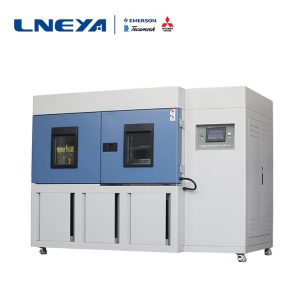condizioni di test di carica della batteria a diverse temperature ambientali
At present, the battery is undoubtedly the most core and critical component in electric vehicles. Therefore, both the OEM and the battery factory need to conduct a comprehensive test of the battery. The characteristics of automotive lithium-ion power batteries are greatly affected by ambient temperature. In low temperature environment, the available energy and power attenuation is more serious, because long-term charging in low temperature environment, the life will be greatly shortened.
In the case of -10 degrees, the battery capacity and operating voltage are significantly reduced; in the case of -20 degrees, the discharge capacity decreases sharply, and the specific capacity is only about 30% of that at normal temperature. Charging at low temperatures is also difficult. Metal lithium formed on the surface of the negative electrode is easy to accumulate. Further chemical reactions will cause internal short circuits in the battery, greatly reducing safety. In the measured temperature range, the internal resistance of the battery is higher under low temperature conditions, and the internal resistance becomes lower and lower as the temperature increases. The change of discharge energy is basically opposite to the change of internal resistance.
According to authoritative tests, the battery charging start current in hot cars is higher than cold cars, and the charging current is higher than cold cars, because the charging voltage is significantly higher than cold cars.
In these tests, the accuracy and temperature simulation become a very important factor. LNEYA’s KRY series-battery motor test cooling heating system is a product born for this emerging field. Fully enclosed tube design, high-efficiency plate heat exchanger, used for lifting temperature and constant temperature control in the test of new energy batteries and motors, especially suitable for heat dissipation and heat release process control during the test. With automatic fault protection function, it can output corresponding signals to ensure equipment safety. The main parts are international brands, quality assurance, the surface is treated with high-voltage electrostatic spraying, and auxiliary equipment can be added according to specific needs. It can achieve multi-channel temperature and flow control, one device can achieve multi-channel output, and each channel can control different flows without interfering with each other. Accepting customization requires solutions that control different flows and temperatures simultaneously.
Raccomandazioni correlate
-
Invitation Letter | 10.17-19 Nanjing International Expo Center [5G18]
1865Our company will participate in the 81st APIChina China International Pharmaceutical Raw Material Intermediate Packaging Equipment Exhibition held at Nanjing International Expo Center from October 17-19, 2018. At that time, we will exhibit refrige...
Visualizza dettagli -
Istruzioni per la selezione del volume della camera per prove d'urto ad alta e bassa temperatura di piccole dimensioni
1859Quando il prodotto di prova (componenti, componenti, componenti o macchina completa) viene posto in una piccola camera di prova d'urto ad alta e bassa temperatura per il test, al fine di garantire che l'atmosfera intorno al prodotto di prova possa...
Visualizza dettagli -
Prestazioni e punti di installazione del frigorifero a bassissima temperatura LNEYA
1342Il congelatore a bassissima temperatura LNEYA Il congelatore LNEYA è ampiamente utilizzato nelle stazioni ematiche, negli ospedali, nei dipartimenti sanitari e di prevenzione delle epidemie, negli istituti di ricerca, nell'industria elettronica, nella medicina chimica, nell'ingegneria biologica, nei laboratori, nelle imprese...
Visualizza dettagli -
 Refrigeratori industriali LNEYA Produttore Fornitore
Refrigeratori industriali LNEYA Produttore Fornitore















